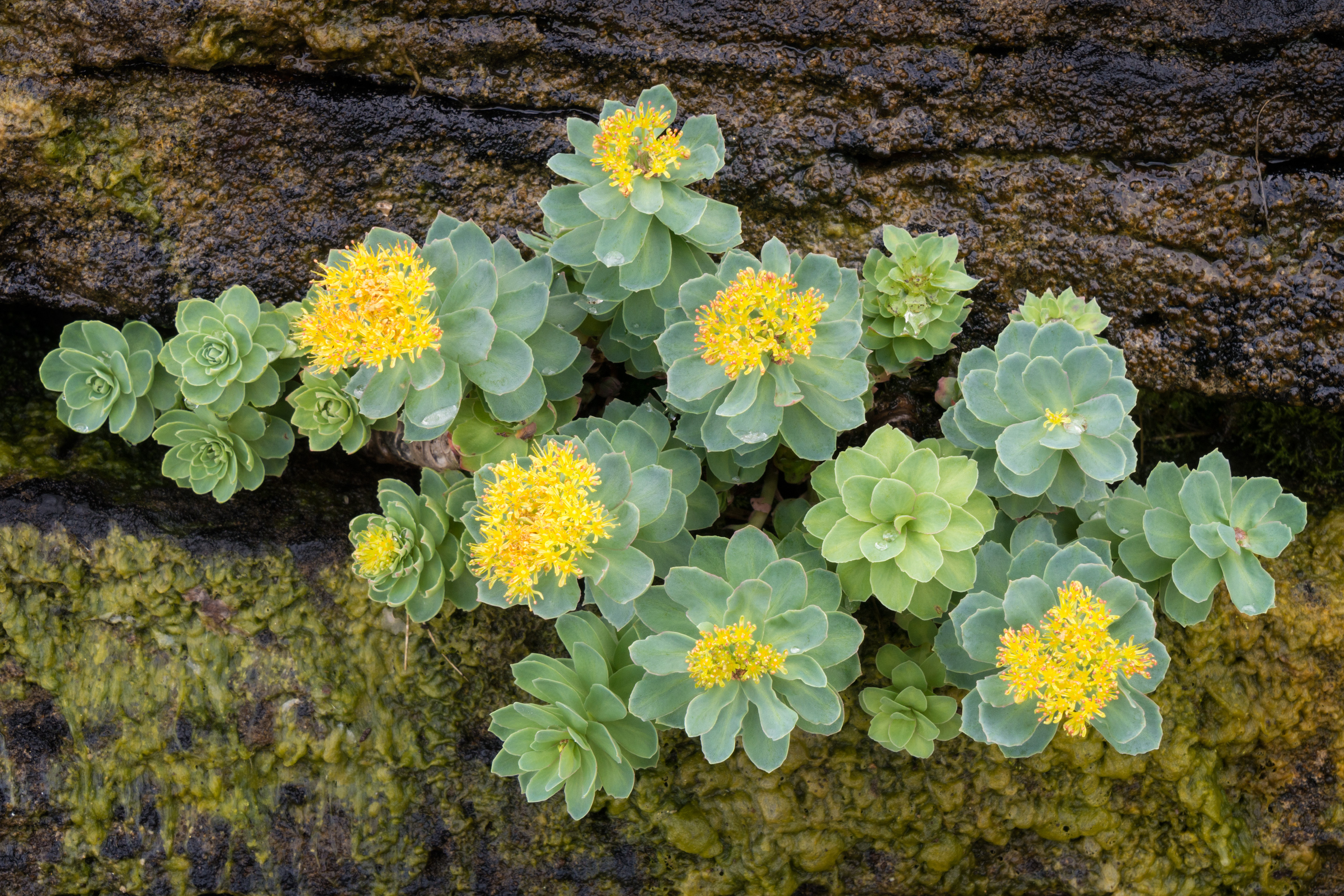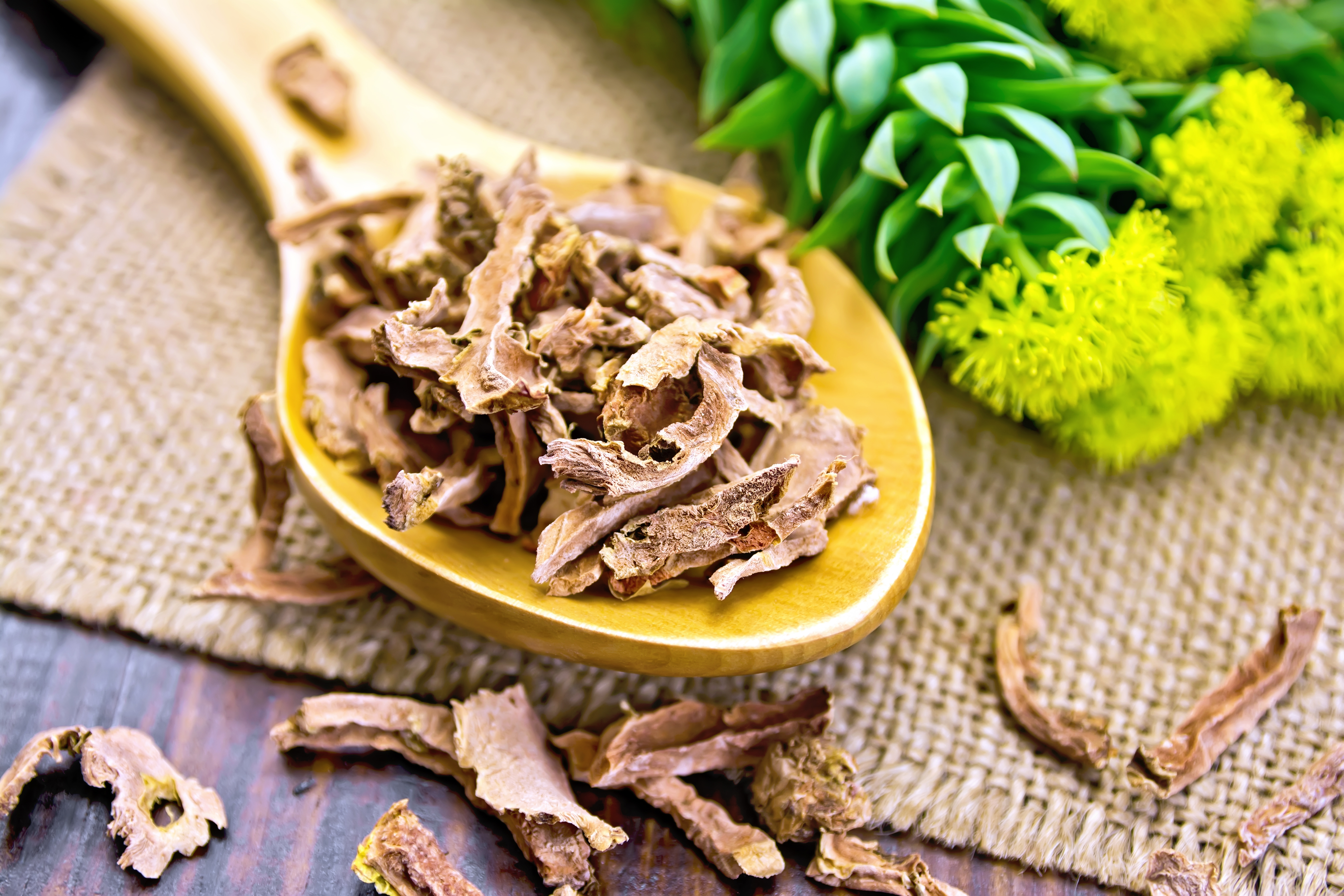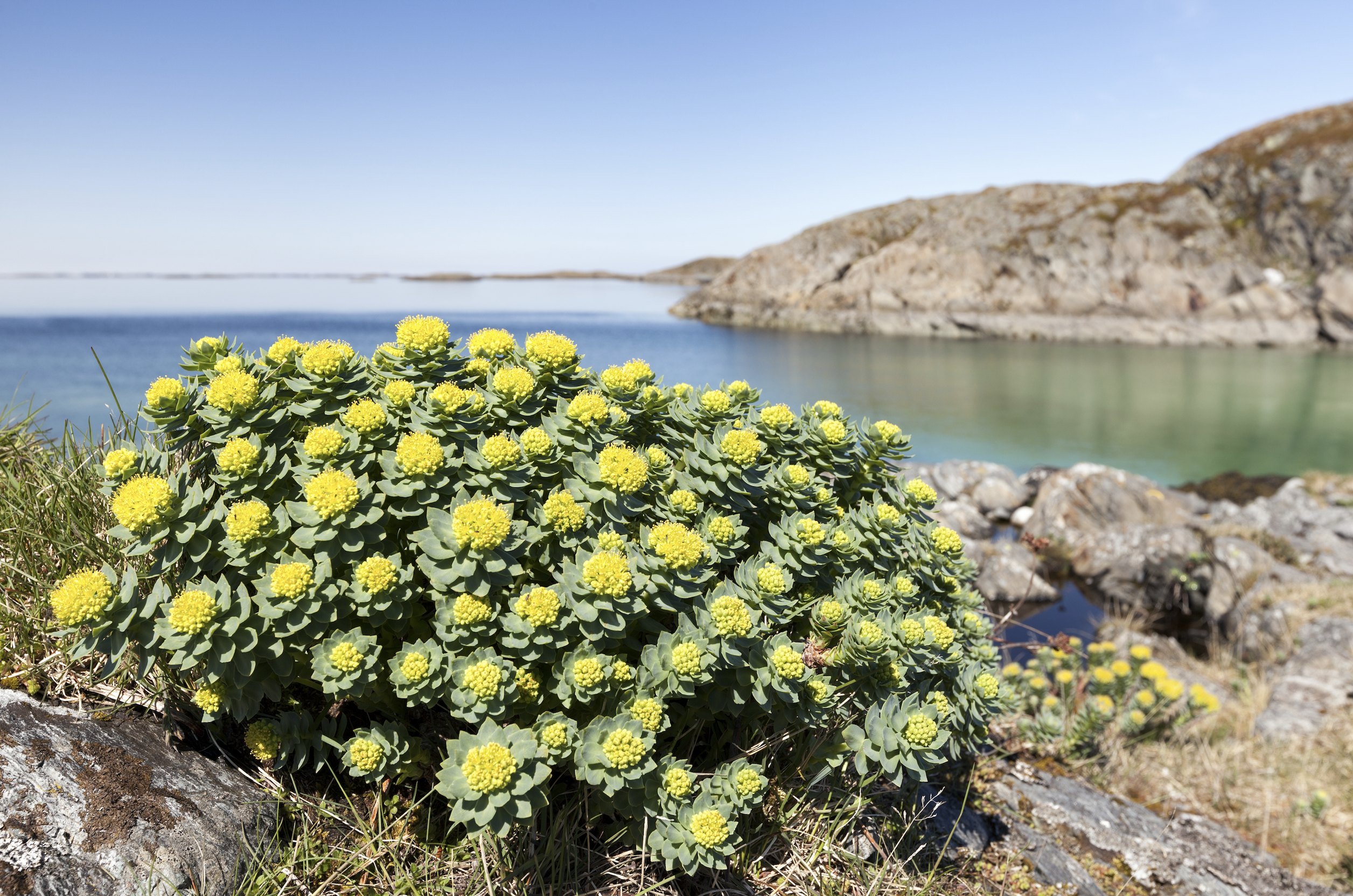Golden Root - Rose Root / Rhodiola rosea / Sonia Dhanda
Rose Root
Rhodiola rosea
Sonia Dhanda
Rhodiola rosea: A resilient herb connecting my home, work, and passion
In the rugged landscapes of Scotland, a remarkable plant thrives, symbolising the resilience of nature and the interconnectedness of our world. Rose root, scientifically known as Rhodiola rosea, is a perennial herb with vibrant yellow blooms and holds a rich history of traditional use. This plant entwines my interest in medicinal herbs and my work in the field of CITES (Convention on International Trade in Endangered Species of Wild Fauna and Flora) and can be found growing in Scotland – where I am from.

Figure 1. Rhodiola rosea growing on a rocky cliff, Scotland,UK. Credit Shutterstock.
Rhodiola rosea is a hardy herbaceous plant that typically grows in meadows, grasslands, coastal cliffs, on mountain rocks and screes across the subarctic and subalpine northern hemisphere. It boasts fleshy green leaves that resemble miniature swords, arranged in a rosette formation close to the ground. The plant's stems rise upwards, reaching a height of around 30 centimetres and culminating in clusters of radiant yellow flowers.
Throughout history, Rhodiola has played a significant role in herbal medicine and cultural traditions. The plant's root, renowned for its adaptogenic properties, has documented uses in North America, Europe, and Central and East Asia. Known for its ability to enhance physical and mental resilience, Rhodiola has been treasured for its potential to alleviate stress, combat fatigue, and promote overall well-being.

Figure 2. Dry roots of Rhodiola rosea. The roots of Rhodiola are often prepared into tinctures. Credit: Shutterstock.
In modern times, Rhodiola has gained widespread popularity as a natural supplement and ingredient in various health products. Its adaptogenic qualities have attracted attention from researchers and health enthusiasts alike. Today, Rhodiola extracts and capsules can be found in wellness stores, highlighting its potential to support cognitive function and reduce anxiety.
As I pursued my career in environmental conservation, I found myself drawn to the critical issue of preserving endangered plant species. This led me to the work of CITES, an international agreement that seeks to ensure the sustainable trade of animals and plants. Global demand for Rhodiola has led to some wild populations decreasing. Cultivated Rhodiola cannot fulfil global demand as the rootstock are slow to mature. The rhizomes for Rhodiola rosea are harvested and traded with other species of Rhodiola, and it is difficult to identify the roots to species level. The threats to wild populations and international demand led to a CITES listing proposal for the genus.

Figure 3. Rhodiola growing in Norway. Credit: Shutterstock
My ethnobotanical research focuses on medicinal plants so when we were contacted to support a CITES listing proposal for Rhodiola I was keen to be involved. During my time working for CITES, this was the first plant listing the United Kingdom was a proponent on which marks a milestone in my CITES career. Rhodiola is now regulated by CITES, trade is facilitated through a permit system striving for sustainable and legal trade.
Rhodiola rosea is a resilient and healing herb. It serves as a constant reminder that our actions have consequences, and it is our responsibility to safeguard the delicate balance between human use and the conservation of precious plant resources. With the lessons learned from Rhodiola, I continue to advocate for the sustainable future of herbalism through ethnobotanical research.
Literature
Brinckmann, J.A., Cunningham, A.B. and Harter, D.E., 2021. Running out of time to smell the roseroots: Reviewing threats and trade in wild Rhodiola rosea L. Journal of Ethnopharmacology, 269, p.113710.
Cuerrier, A., Tendland, Y., Rapinski, M., 2014. Ethnobotany and Conservation of Rhodiola Species. In: Cuerrier, A., Ampong- Nyarko, K. (Eds.), Rhodiola Rosea. CRC Press, Boca Raton, FL.
Dhanda, S. 2022. Extinction threats and CITES protection: Rhodiola as a case study. https://www.herbalreality.com/herbalism/sustainability-social-welfare/exitinction-threats-cites-protection-rhodiola/
Herbal Reality. 2022. Expert Herbal Reality Resource Rhodiola. https://www.herbalreality.com/wp-content/uploads/2022/01/Expert-Herbal-Reality-Resource-Rhodiola.pdf
About the author
 Sonia is a policy advisor on natural resource governance. She specialises in the Convention on International Trade in Endangered Species of Wild Fauna and Flora (CITES). Additionally, she is undertaking a PhD with University College London and the Royal Botanic Gardens, Kew. Her doctoral research is examining how global policies accommodate the diverse relationships, uses and sustainable trade of wildlife. Her research interests are ethnobotany, wildlife trade, medicinal plants and biocultural diversity.
Sonia is a policy advisor on natural resource governance. She specialises in the Convention on International Trade in Endangered Species of Wild Fauna and Flora (CITES). Additionally, she is undertaking a PhD with University College London and the Royal Botanic Gardens, Kew. Her doctoral research is examining how global policies accommodate the diverse relationships, uses and sustainable trade of wildlife. Her research interests are ethnobotany, wildlife trade, medicinal plants and biocultural diversity.
The Society for Ethnobotany is open to researchers, practitioners, and enthusiasts of ethnobotany and economic botany.
The 2026 SEB Annual Meeting will take place in Montpellier, France, from May 31-June 4th!
If you have an interest in ethnobotany or economic botany you can become a member of the Society for Ethnobotany.
If you are a member of the Society for Ethnobotany and would like to contribute a Favorite Plant please contact Blair Orr, blairorr@ymail.com. (Note: ymail, not gmail.)
